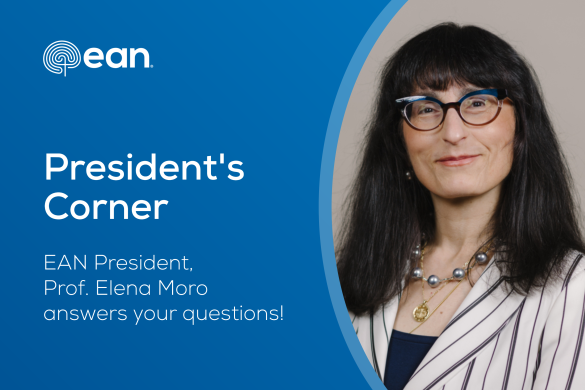
By Tom Jenkins, Editor-in-Chief, EAN Pages
Happy New Year 2021 to all EAN members
The end of another year, one of the most turbulent in recent times. 2020 was the year of the COVID19 pandemic, which resulted in global disruption on a scale most people have not experienced in their lifetimes. After more than 74 million cases, and more than 1.6 million deaths at the time of writing, national lockdowns across the world, new variants emerging, Christmas restrictions, and economic consequences still to be fully realised, 2020 will go down in history as an annus horribilis.
The impact on healthcare services has been severe. Services were stretched to capacity in many countries- but did not break. After China, Europe became the epicentre of the first wave, which hit Italy first, and then Spain, and images of the distress of people on intensive care units critically ill with this new disease, and their doctors and nurses in protective suits, sent shockwaves across the continent. Next, the wave hit other countries, affecting even higher numbers of people, and resulting in still greater death tolls: in Russia, France, the UK, and Germany; the virus hit every country in Europe. COVID19 reached 218 nations and territories in total, with more than 17 million cases recorded in the USA and cases reaching remote Pacific islands. A second wave followed and COVID19 cases and deaths escalated exponentially. Often, relatives could not even visit their loved ones in hospital because of the requirement for infection control measures. The streets of major cities emptied as lockdowns ensued, and livelihoods were destroyed. Diverse neurological complications emerged including strokes, encephalopathy, seizures, encephalitis, myelitis, neuropathy, and myopathy.
But people adapted. Knowledge of the virus increased in increments. Clinicians started to recognise patterns; researchers developed tests then treatments; dexamethasone and remdesivir were validated by pragmatic trials in record time, and then rapidly integrated into clinical practice. Other agents are following. In some cases, treatments were championed, then tested and proven ineffective. Evidence-based medicine continued. Life continued. People learned to communicate remotely as matter of routine. Clinicians adapted their skills to redeploy to new areas of need. Neurologists adapted. The annual EAN Congress, which was due to be hosted in beautiful Paris, was converted in only a few weeks to a free online live event that more than 40,000 delegates attended, the biggest neurological Congress in history to date.
The EAN formed task forces, conducted clinical surveys, issued recommendations and established case registries. Like the virus, research outputs expanded exponentially. Vaccines emerged, were validated in trials and are starting to enter clinical practice. Much remains unknown, about the longer term consequences of the virus and its complications, and whether the virus will also adapt, or can be eradicated. Neurologists must remain central in the fight.
As we enter 2021, there is some cause for hope. To paraphrase from another global crisis of the past: this is not the end. It is not even the beginning of the end but, perhaps, the emergence of vaccines could signal the end of the beginning. A unified approach across Europe will be necessary to control the virus; to treat neurological complications in both the short and long term; to expand our knowledge through clinical and research collaboration; to deliver effective vaccines effectively and equitably; to assess their effect. The goal is precious: to return to our previous freedoms, that now seem so distant, that we perhaps used to take for granted, and that we all hope and believe we can regain before too long.













